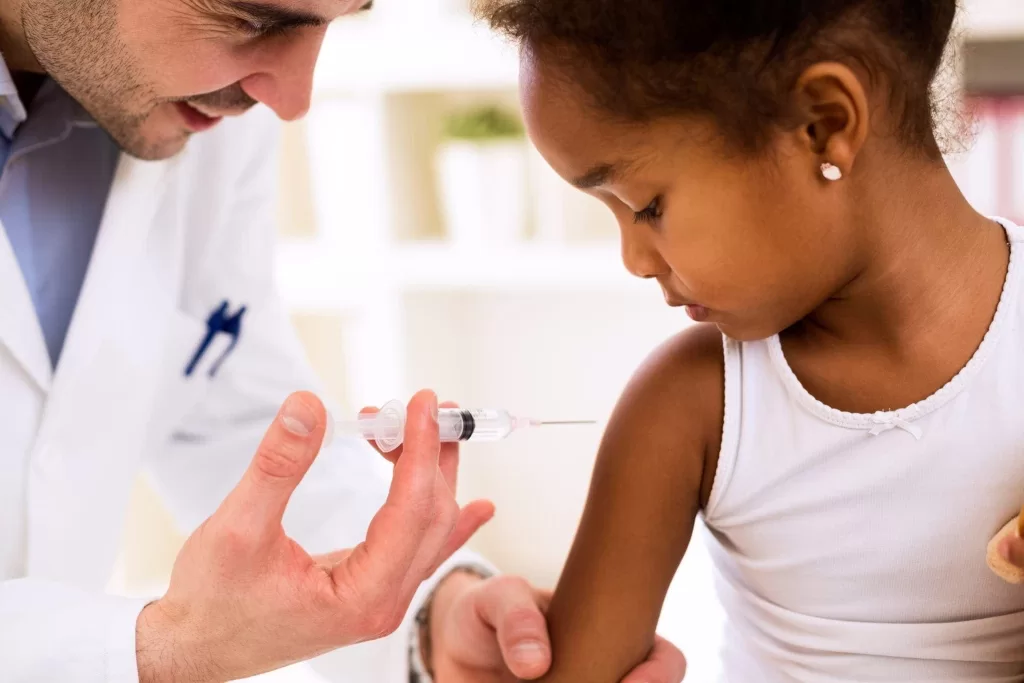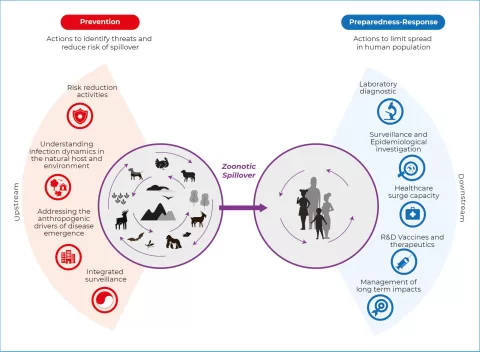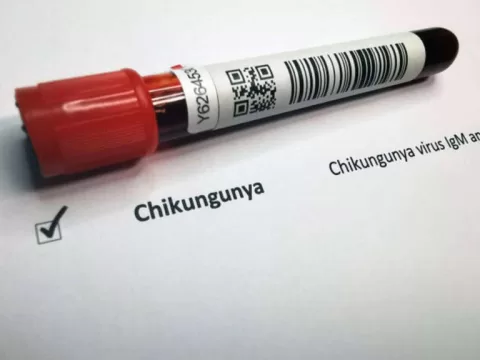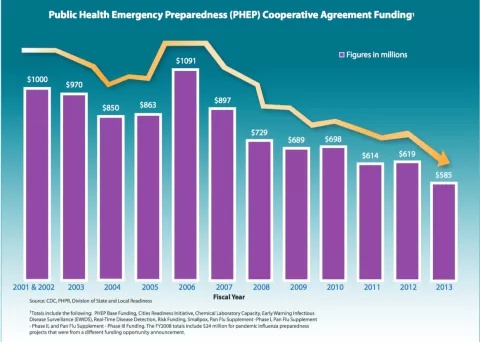Childhood vaccines play a pivotal role in protecting young lives and safeguarding public health. According to a recent CDC study on vaccines, these essential immunizations have prevented an astounding 508 million cases of illness among children in the United States over the past three decades. By reducing hospitalizations and averting 1.1 million deaths, the importance of childhood immunizations extends far beyond individual protection, delivering significant public health savings of $2.7 trillion. The analysis underscores the considerable impact of the Vaccines for Children (VFC) program, which has made lifesaving vaccines accessible to families in need. As we continue to advance in vaccine development, the positive effects of vaccines for children will resonate for generations to come.
Immunizing young individuals is crucial for ensuring their healthy development and the well-being of communities. Through the strategic implementation of routine vaccinations, we can significantly reduce the incidence of severe illnesses such as measles, polio, and whooping cough. A thorough examination by researchers reveals that these preventive measures not only protect children but also contribute to economical savings in healthcare costs and societal impact. Strengthening public health initiatives surrounding childhood immunizations helps reinforce the importance of vaccines in cultivating a resilient population. As we embrace new medical advancements, the role of effective vaccination strategies will remain integral to promoting health and preventing disease.
The Essential Role of Childhood Vaccines in Public Health
Childhood vaccines play a critical role in safeguarding the health of communities. Vaccines not only protect individual children from severe illnesses but also contribute significantly to public health by reducing the overall incidence of infectious diseases. According to a recent CDC study on vaccines, routine childhood immunizations have averted an astounding 508 million cases of illness and over 1 million deaths since their widespread implementation. These figures underscore the importance of vaccines for children, highlighting how they serve as a shield against outbreaks that can ripple through communities, affecting even those who may not be directly vaccinated.
Beyond individual health, childhood vaccinations foster herd immunity, which is crucial in protecting vulnerable populations—such as those who cannot be vaccinated due to medical reasons. The economic impact is equally noteworthy; the vaccination program has led to substantial public health savings, with an estimated $540 billion saved in direct medical costs and $2.7 trillion in societal benefits. This analysis confirms that vaccines are a wise investment for both families and the broader healthcare system, reinforcing their indispensable role in promoting health equity and preventing unnecessary suffering.
Economic Impact of Childhood Immunizations
The economic contributions of childhood immunizations extend far beyond immediate healthcare savings. The CDC’s findings reveal that for every dollar spent on vaccines, there is a significant return on investment. Childhood vaccinations have not only prevented countless hospitalizations but have also saved families from the financial burden of treating serious, vaccine-preventable diseases. These findings illuminate the dual benefits of vaccination strategies: protecting children from illness while also ensuring that healthcare resources are used efficiently.
Moreover, the public health savings derived from childhood vaccines are remarkable. By averting over 40 million hospitalizations, the vaccines have allowed healthcare systems to allocate funds to other pressing health needs. This cost-effectiveness is particularly critical during times of resource constraint, where public health budgets are stretched thin. Thus, investing in childhood immunizations is not just a health decision; it’s an economically sound strategy that secures both immediate and long-term savings for society.
Evaluating Vaccines for Children through the CDC Study
The CDC study on vaccines provides a comprehensive analysis of the effectiveness of childhood immunizations. By examining data from the Vaccines for Children (VFC) program since its inception in 1994, researchers have outlined how vaccination efforts have adapted to the needs of communities in the United States. This program ensures that children from low-income families have access to necessary vaccines, which is crucial in achieving high vaccination coverage rates. It is within this context that the impact of childhood vaccines can be truly appreciated—ensuring that every child, irrespective of their economic background, has the opportunity to thrive.
The analysis incorporates nine key vaccines, covering a wide spectrum of preventable diseases. These include vaccines for conditions like measles, mumps, rubella, and pneumococcal infections. The meticulous review of data reveals not only the direct health impacts but also the broader societal benefits associated with routine immunizations. By controlling outbreaks and minimizing disease spread, the CDC’s findings emphasize that vaccines for children represent one of the most effective public health strategies employed to date.
Long-Term Benefits of Routine Childhood Immunizations
Routine childhood immunizations are essential for ensuring the long-term health of the population. The findings of the CDC underscore the necessity of maintaining high vaccination rates to prevent the resurgence of diseases that have already been effectively controlled or eradicated. With significant savings attributed to vaccines—over $2.7 trillion—it’s clear that proactive immunization not only saves lives but also sustains public health systems by reducing the financial burden of outbreaks and hospitalizations.
In addition to direct health benefits, these immunizations also foster a healthier future generation capable of contributing productively to society. By protecting against infectious diseases, children are more likely to succeed in educational environments free from interruptions caused by illness. This correlation between strong childhood vaccination programs and societal advancement is not only about health; it embodies the foundational promise of public health policies that prioritize preventive measures over reactive treatments.
The Impact of Vaccines on Childhood Mortality Rates
The dramatic reduction in childhood mortality rates due to vaccines is one of the most compelling indicators of their success. Since the introduction of a robust immunization program, the mortality rate for vaccine-preventable diseases has plummeted, reflecting the efficacy of childhood vaccines in saving lives. The CDC’s statistics illustrating over 1.1 million deaths preserved by vaccination efforts resonate strongly with families who can now raise their children free from the fear of serious disease.
Understanding the impact of these vaccines goes beyond historical data; it highlights an ongoing responsibility for parents, healthcare providers, and public health officials to advocate for and maintain vaccination programs. The case for vaccines becomes even more relevant when considering emerging health threats and the potential for outbreaks of diseases previously deemed under control. Continuous advocacy for childhood vaccinations ensures that society remains prepared and resilient against such challenges.
Addressing Vaccine Hesitancy in Communities
Despite the clear benefits outlined in studies, vaccine hesitancy remains a significant barrier to achieving optimal immunization coverage. Addressing concerns and misconceptions among parents is critical for maintaining public confidence in childhood vaccines. Education campaigns that leverage findings from CDC studies can empower families with evidence-based information, helping them understand the vital role routine immunizations play in safeguarding their children and communities.
Building trust within communities through transparent communication is key to overcoming vaccine hesitancy. Community engagement efforts that involve healthcare providers, local leaders, and families can create a supportive environment for discussing the importance of vaccines. By addressing fears and misinformation, we can increase vaccination rates and thereby protect public health, ultimately ensuring that the substantial societal savings attributed to immunizations continue to grow.
The Role of the VFC Program in Vaccine Accessibility
The Vaccines for Children (VFC) program is a cornerstone of childhood immunization efforts in the United States. By providing vaccines at no cost to eligible children, the program addresses financial barriers and enables equitable access to necessary immunizations. This initiative has made a substantial difference in public health outcomes by reaching populations that may otherwise go without preventive care, thus amplifying the positive impacts of vaccinations on community health.
Research has shown that VFC covers approximately half of childhood vaccines administered, accentuating its critical role in maintaining high immunization coverage rates. The economic implications of this program extend beyond direct healthcare savings; it represents a significant investment in the future health of the nation. Ensuring that all children receive their vaccinations, regardless of income, not only reduces disease prevalence but also fosters social equity and instills a sense of community responsibility towards public health.
Protecting Public Health through Comprehensive Immunization Strategies
The case for comprehensive immunization strategies is stronger than ever as we navigate an era of increased health challenges. The CDC’s findings present a compelling argument for sustained investment in childhood vaccines as a means of protecting the population at large. By adopting a proactive approach, health agencies and parents can work together to ensure that both current and future generations benefit from the safety and efficacy of well-established vaccination programs.
Strategies that include public awareness campaigns, healthcare provider education, and community outreach can reinforce the importance of routine vaccinations. Comprehensive plans that address not only the availability of vaccines but also accessibility and public awareness will be pivotal in maintaining high vaccination rates. Investing in these immunization strategies is not just about preventing disease; it’s about enhancing societal well-being and ensuring a healthy future for all.
The Future of Childhood Vaccines: Innovations and Challenges
As we look to the future, the landscape of childhood vaccines is evolving with advancements in medical technology and research. Innovations such as new vaccine formulations and delivery methods are being developed to improve the effectiveness and convenience of immunizations. Continuous research, such as that done by the CDC, evaluates the long-term impacts of these vaccines, ensuring that they remain relevant and beneficial in the face of emerging diseases and changing epidemiological patterns.
However, challenges persist that threaten the progress made in vaccine coverage. Addressing disparities in vaccine access and combating misinformation are critical to sustaining public trust and engagement in vaccination programs. Collaborative efforts among healthcare providers, policymakers, and the community are essential to navigate these challenges successfully and to facilitate the successful rollout of future vaccines, ensuring ongoing protection against serious childhood illnesses.
Frequently Asked Questions
What are the benefits of childhood vaccines for public health?
Childhood vaccines provide significant benefits to public health by preventing approximately 508 million cases of illness among children from 1994 to 2023. They have resulted in 32 million avoided hospitalizations and 1.1 million saved lives, leading to direct savings of $540 billion and societal savings of $2.7 trillion.
How do childhood immunizations impact healthcare costs?
Childhood immunizations have a profound impact on healthcare costs by saving approximately $540 billion in direct healthcare expenses through the prevention of illnesses and hospitalizations. This cost-effectiveness underscores the importance of routine childhood vaccines in supporting a healthy population.
What role does the CDC study on vaccines play in understanding vaccine effectiveness?
The CDC study on childhood vaccines highlights the effectiveness of routine immunizations by analyzing their impact on children’s health from 1994 to 2023. It demonstrates that these vaccines have drastically reduced illness, hospitalizations, and deaths while generating substantial economic savings for both individuals and society.
What specific vaccines are included in childhood immunizations from the CDC report?
The CDC report on childhood vaccines covers several routine immunizations, including diphtheria and tetanus toxoids, Haemophilus influenzae type b, poliovirus vaccines, measles, mumps, and rubella (MMR), hepatitis B, varicella, pneumococcal conjugate, hepatitis A, and rotavirus vaccines.
How does the Vaccines for Children (VFC) program impact childhood immunizations?
The Vaccines for Children (VFC) program significantly impacts childhood immunizations by providing access to vaccines at no cost for families who cannot afford them. It has been key in lowering the rates of vaccine-preventable diseases and supporting the overall effectiveness of childhood vaccinations in the U.S.
Why are routine childhood vaccinations considered a cost-effective public health measure?
Routine childhood vaccinations are considered a cost-effective public health measure because they prevent vast numbers of illnesses and deaths, resulting in net savings of $540 billion in direct healthcare costs and $2.7 trillion in societal costs, making them one of the most effective interventions in public health.
What savings have been attributed to childhood vaccines according to recent studies?
Recent studies attribute significant savings to childhood vaccines, estimating $540 billion in direct healthcare savings and $2.7 trillion in societal benefits due to the prevention of illnesses, hospitalizations, and deaths from vaccine-preventable diseases.
| Key Points | |
|---|---|
| 1. Importance of Childhood Vaccines | Childhood vaccines have played a crucial role in preventing diseases among children. |
| 2. Impact Statistics | 507 million cases of illness, 32 million hospitalizations, and 1.1 million deaths prevented. |
| 3. Economic Savings | Direct savings of $540 billion and societal savings of $2.7 trillion. |
| 4. CDC’s Role | CDC researchers analyzed data from the Vaccines for Children (VFC) program since 1994. |
| 5. Included Vaccines | Analysis covered 9 key vaccines including MMR, hepatitis B, and pneumococcal vaccines. |
| 6. Cost-Effectiveness | Routine vaccinations are considered highly cost-effective public health measures. |
| 7. VFC Program’s Contribution | VFC program purchased about half of childhood vaccines at discounted prices. |
Summary
Childhood vaccines are essential to public health, having significantly reduced illness and death rates among children in the U.S. Over the past 30 years, they have successfully prevented an estimated 508 million illnesses, saving billions in healthcare costs and improving societal welfare. The impact of routine immunizations extends beyond health, showcasing the importance of programs like the Vaccines for Children (VFC) initiative. Overall, childhood vaccines remain one of the most effective strategies for safeguarding the health of future generations.
The content provided on this blog (e.g., symptom descriptions, health tips, or general advice) is for informational purposes only and is not a substitute for professional medical advice, diagnosis, or treatment. Always seek the guidance of your physician or other qualified healthcare provider with any questions you may have regarding a medical condition. Never disregard professional medical advice or delay seeking it because of something you have read on this website. If you believe you may have a medical emergency, call your doctor or emergency services immediately. Reliance on any information provided by this blog is solely at your own risk.








